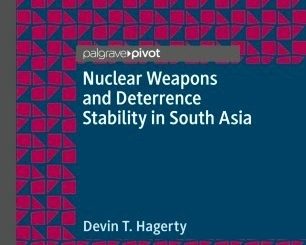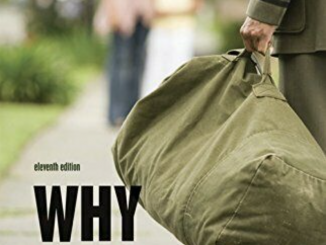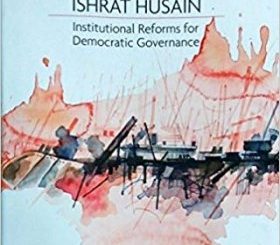
FICTION: HOME FIRE
AUTHOR: KAMILA SHAMSIE
BLOOMSBURY PUBLISHING PLC 50
ISBN: 978 93 86606 65 6
264 pp
Fiction: The Polarized World
Homefire is a reimagining of Sophocles ‘Antigone’ play, belonging to the Greek tragedy of the Hellenic era. The epigraph of the book picks the famous saying of the play: “The ones we love… are the enemies of the state”. Like Sophocles, the novel traces back to the complex interplay of conflict between the law of the state, religious law, and society. Antigone, the protagonist buried her traitor brother in defiance of the State’s edict because it is commanded by religious gods. In addition, the novel introduces various themes to its readers and puts open the dilemmas faced by Muslims in the Western world due to their identity.
The true colors of Homefire were put into words by Sarah Sands, chair of judges that voted Homefire as the women prize-winning novel of 2018. Sands said the panel “chose the book which we felt spoke for our times. Homefire is about identity, conflicting loyalties, love, and politics”. The identity that remains blurred and disputed as the protagonists struggle to prove their British credentials on the verge of an imminent onslaught of State on citizenship and immigration rules.
Homefire begins with tragic, intrusive, and hours-long interrogation of Isma at the Heathrow Airport where she has to board her flight to the USA. It ranges from browsing her internet history to friskily examining her clothes and suitcases. The officers ask her ‘But do you consider yourself British?’ and evaluation of her views regarding Shias, homosexuals, the Queen, democracy, the Great British Bake Off, the invasion of Iraq, Israel, suicide bombers, dating websites.
The book comprises five parts, each of which separately deals with the novel’s characters; revolves around their life and dwells on their fears. The main story circulates around three siblings who are of half-Pakistani and half-British descent. Their life haunted by the jihadi background of their father and struggles to keep this identity hidden. The eldest Isma gets her Ph.D. scholarship and leaves for the Amherst, Massachusetts USA. Aneeka, the younger and twin of Parvaiz, however, is a more bold character of the novel, gets a scholarship to pursue her Law studies at the London School of Economics (LSE). Orphaned at an early age, the twins were tendered by Isma who became their guardian, when she was only twelve herself.
Parvaiz is only nineteen years old when he comes across a guy who tricks him, extols his father’s jihadi feats, and portrays the Bagram abuses to recruit the young lad. The novel lays the perfect picture of the manner the recruits are brainwashed, coaxed, and entangled in the web of extremism. It sketches the entire paradigm from displaying beautiful pictures, imparting selective information to promising better futures that Farooq uses to beguile parvaiz. Parvaiz, however, gets disillusioned as he reaches Caliphate and wants to come back home. The plot is set on this one question.
Determined to bring back her brother, aneeka falls into an affair with Eamonn Lone, son of Home-secretary Karamat Lone, who himself is a past Muslim. Signified as ‘Lone Wolf’, half-Pakistani, half-Irish; loathed by Pakistani British community for his diatribe against Muslims and a conservative member of Parliament who denounces “backwardness” of Muslims. Karamat Lone endeavors hard to prove his loyalty and accrue the best slot for himself in the Parliament. He is, however, the most sophisticated character of the novel with his switching moods and characters. Most often maintaining a strict British personality, Karamat Lone becomes another person on occasions of Muslim’s Eid festivals. The fierce struggle of the novel operates between Karamat and Aneeka in the climax.
The paths cross between Eamonn and Isma in the USA, where a budding infatuation erupts; soon to be watered down by Eamonn’s return to home, where he meets Isma’s younger sister aneeka and falls in love with her. Aneeka is the most furious and risk-taking character of the novel.
Homefire is grounded in extreme suspense which makes the story more exciting. Despite aneeka’s best efforts, Parvaiz gets murdered in Istanbul while en route to British Consulate by IS’ man who finds out his infidelity. His body is dispatched to Pakistan and he’s proclaimed a terrorist by British media. It goes in tandem with the unfolding of love affair. Aneeka heads to Pakistan to bring back the body of his twin and fight for justice.
The story throws light on the citizenship rules, immigration problems, identity crisis, and stereotyping of Muslims in the West. The stringent regime and questions circulating on the citizenship of the individuals who leave their homelands to join terrorist networks are put into the spotlight. It equates the customary unburials and tortures on prisoners of Guantanamo with the afflictions imposed by ISIS. It presents a picture of West where a Turban or scarf-wearing girl is looked inquisitively. As Eamonn asks Isma about her turban to which she answers ‘people in Massachusetts who have ever asked me about it both wanted to know if it’s a style thing or a chemo thing’. From Preston Road, London to Raqqa, an interval at Istanbul to the heart of Pakistan, Karachi, it is a cinematic novel. Shamsie documents every little moment and fills life in the novel. Her description of grief and terror captures the mind of readers who begin to feel it on a personal level. “Grief manifested itself in ways that felt like anything but grief; grief obliterated all feelings but grief”. The personal, political and religious interplay and fluctuations in the novel keep its readers adhered to the story. Homefire bears significance to the world which is divided between liberal powers and fanatics.
![]()




Moomal’s writeup is really encouraging me to Read this whole Book once a while. I have already gone through her pervious article “Symbolism and tug-of-war on nomenclature of mass killings”, Just beautiful and out of the mark writing she has.
MashaAllah
Keep it up Girl
Thankyou khaleeque Ahmed 😉